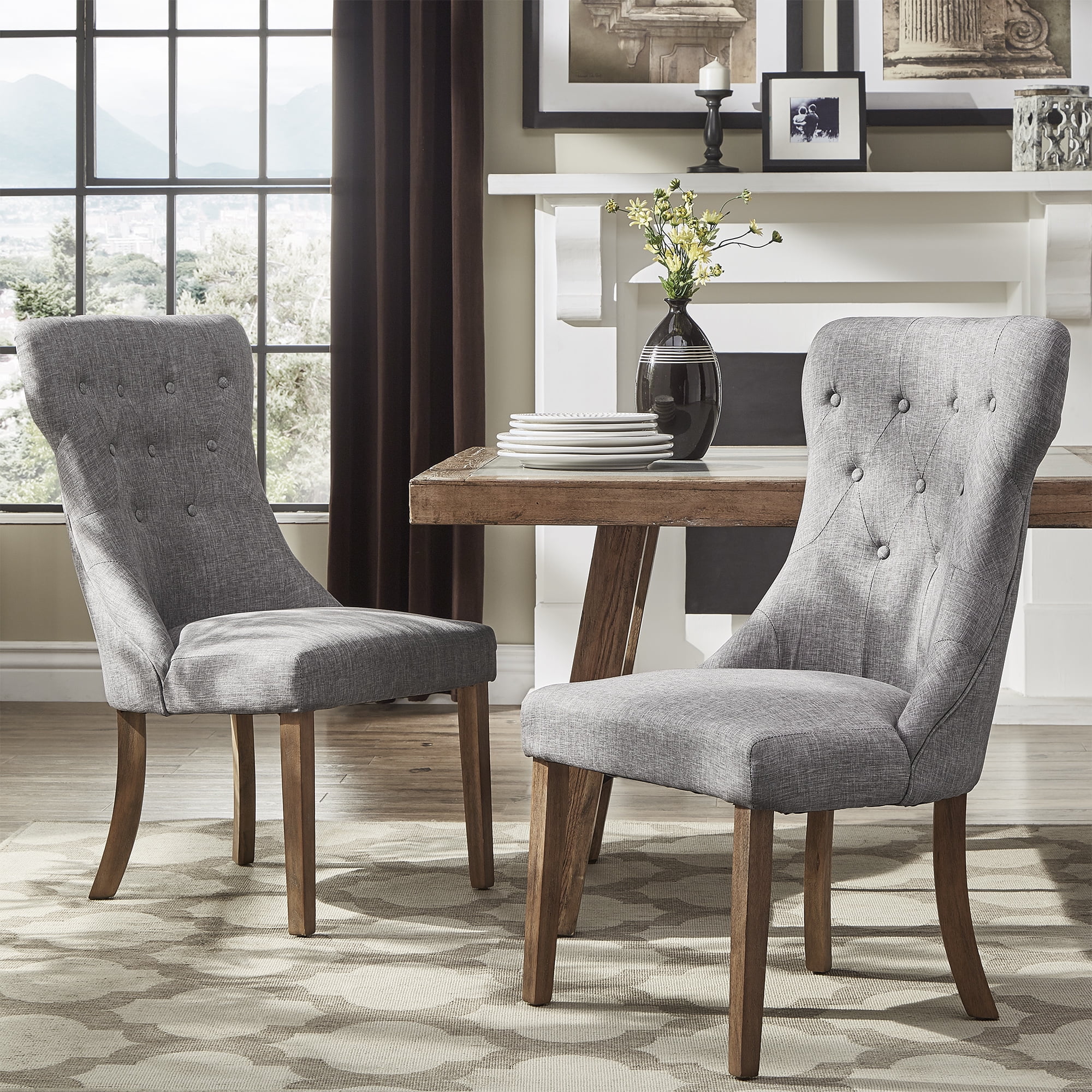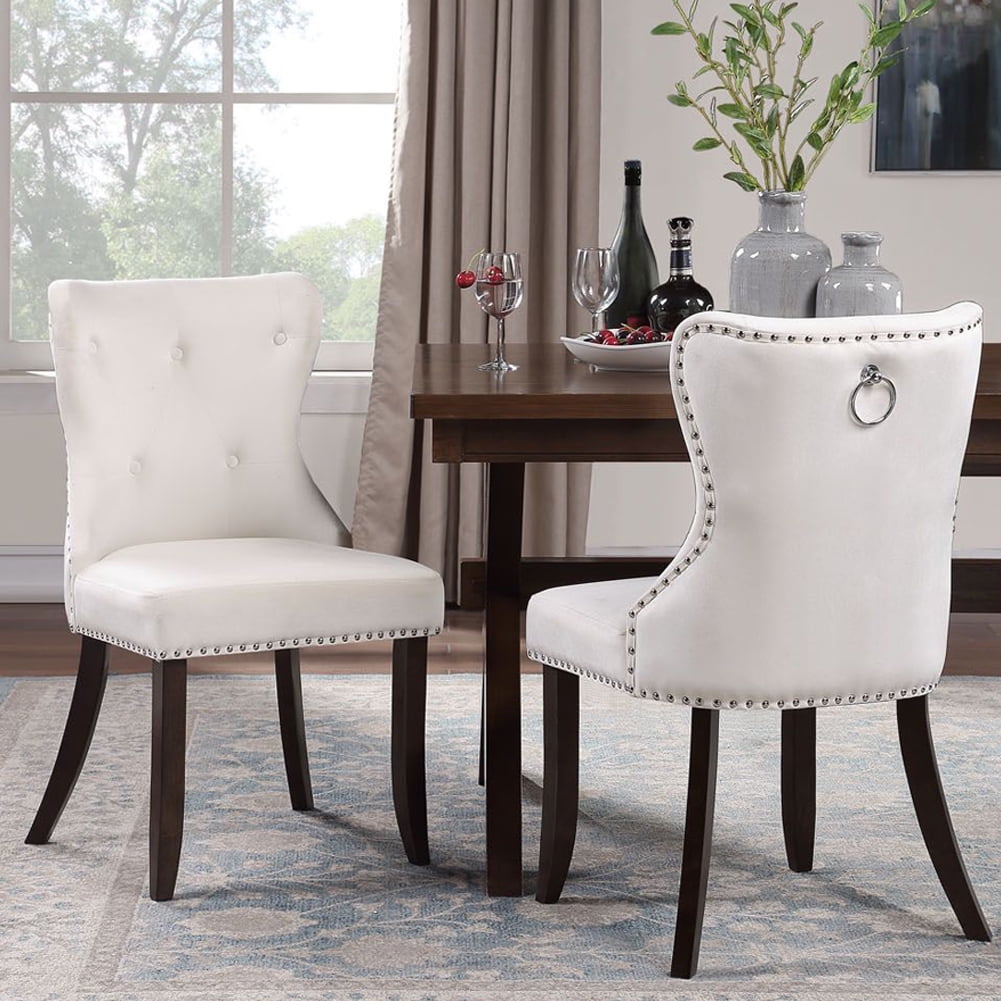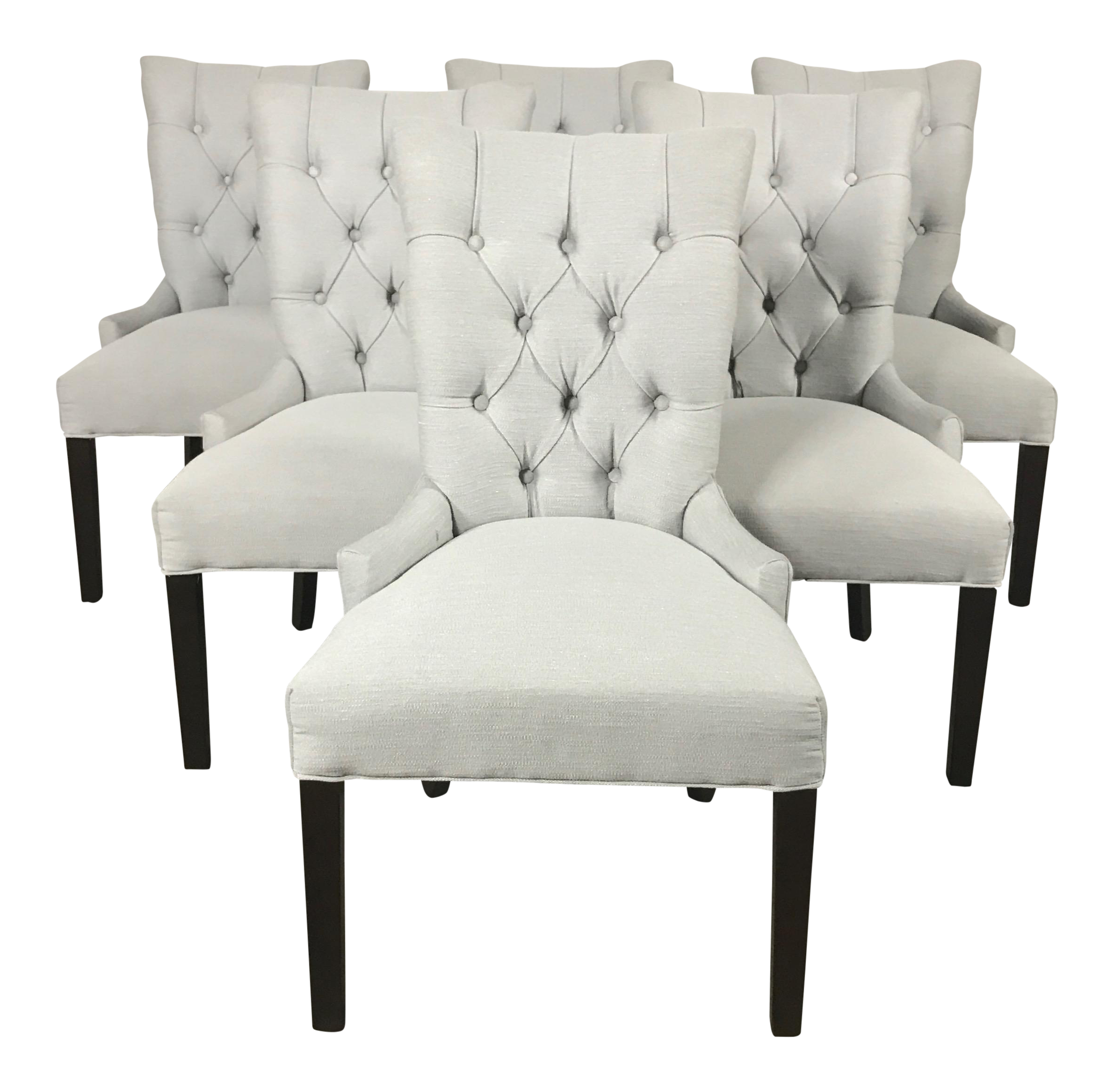The Allure of DIY Tufted Dining Chairs

It’s no secret that DIY projects are taking the home decor world by storm. People are increasingly turning to their own creativity and resourcefulness to create unique and personalized spaces. And when it comes to DIY furniture projects, tufted dining chairs are quickly becoming a favorite. They offer a blend of comfort, elegance, and a touch of vintage charm that can instantly elevate any dining area.
The Appeal of Tufted Furniture
Tufted furniture, with its distinctive buttoned upholstery, has a timeless appeal. The intricate stitching and plush cushions exude a sense of sophistication and luxury. This style has been a mainstay in traditional and classic interiors for decades, but its versatility has allowed it to seamlessly integrate into modern and contemporary settings as well. Dining chairs, in particular, benefit from the tufted design. The buttoned upholstery adds a layer of texture and visual interest, while the padded seats provide exceptional comfort for long meals and gatherings.
Benefits of Creating a Tufted Dining Chair
Personalization
One of the most significant advantages of DIY tufted dining chairs is the opportunity for complete personalization. You can choose from a wide range of fabrics, colors, and button styles to create chairs that perfectly reflect your individual taste and style. Whether you prefer classic velvet, contemporary linen, or bold patterned upholstery, the possibilities are endless.
Cost Savings
Creating your own tufted dining chairs can also save you a significant amount of money compared to purchasing pre-made options. While the initial investment in materials may seem substantial, you’ll likely find that the overall cost is significantly lower than buying new chairs. This is especially true if you already have some basic woodworking tools and skills.
Sense of Accomplishment
There’s a deep sense of satisfaction that comes with completing a challenging DIY project. Building your own tufted dining chairs is a rewarding experience that allows you to showcase your creativity and skills. It’s a project that you can be proud of, and it adds a unique touch to your home that you won’t find anywhere else.
Essential Materials and Tools: Diy Tufted Dining Chair

The heart of any DIY project lies in the right materials and tools. A well-equipped toolbox is like having a trusty sidekick on your crafting journey. This section will guide you through the essentials needed to bring your tufted dining chair vision to life.
Upholstery Materials
Upholstery materials are the soul of your tufted dining chair, defining its comfort, style, and durability. Choose wisely, and you’ll be rewarded with a piece that’s both beautiful and built to last.
- Fabric: The fabric you choose will be the star of the show, setting the tone for the entire chair. Consider factors like durability, stain resistance, and style. Popular options include cotton, linen, velvet, and leather, each with its own unique feel and character. For example, cotton is breathable and easy to clean, while velvet adds a touch of luxury and sophistication.
- Foam: Foam provides the padding and comfort of your chair. You can choose from different densities and thicknesses depending on the level of support you desire. High-density foam offers firm support, while lower-density foam provides a softer, more plush feel.
- Batting: Batting acts as a cushioning layer between the foam and fabric, adding softness and creating a smooth, even surface. It helps to prevent the fabric from bunching or wrinkling.
- Staple Gun: This tool is your best friend for attaching the upholstery to the chair frame. Look for a staple gun with adjustable depth settings to ensure a secure and even finish.
- Staples: Choose staples that are long enough to penetrate the chair frame but not so long that they protrude through the fabric.
Wood Materials
The foundation of your tufted dining chair is its wooden frame. Selecting the right wood will ensure strength, durability, and aesthetic appeal.
- Wood for the Frame: Hardwoods like oak, maple, and walnut are known for their strength and durability, making them ideal for furniture frames. They also offer a beautiful natural grain that can add character to your chair.
- Plywood: Plywood is a versatile material that can be used for the chair seat and back. It’s strong, lightweight, and affordable.
- Wood Glue: Wood glue is essential for bonding the different wood pieces together, ensuring a strong and durable frame.
- Screws: Use screws of appropriate length and strength to secure the frame together.
- Wood Filler: Wood filler helps to smooth out any imperfections in the wood, creating a clean and polished finish.
Hardware
Hardware is the unsung hero of your tufted dining chair project. These small but essential components contribute to its functionality and overall appeal.
- Tufted Buttons: Tufted buttons are the defining feature of a tufted chair, adding a touch of elegance and sophistication. Choose buttons that complement the fabric and overall style of your chair.
- Button Covers: Button covers protect the buttons from wear and tear and provide a finished look.
- Fabric Tape: Fabric tape helps to secure the fabric around the edges of the chair, creating a neat and professional finish.
- Scissors: Sharp scissors are essential for cutting fabric, batting, and other upholstery materials.
- Measuring Tape: A measuring tape is crucial for accurate measurements when cutting fabric and wood.
- Screwdriver: A screwdriver is needed for assembling the chair frame and attaching the hardware.
- Hammer: A hammer is used for driving in nails and staples.
- Safety Glasses: Safety glasses protect your eyes from flying debris when using power tools.
Tools, Diy tufted dining chair
Tools are your allies in tackling the different stages of your tufted dining chair project.
- Power Drill: A power drill makes it easier to drill holes for screws and buttons.
- Sandpaper: Sandpaper is used to smooth out the wood surfaces and prepare them for finishing.
- Wood Stain: Wood stain enhances the natural beauty of the wood and gives your chair a rich, warm color.
- Wood Finish: A wood finish protects the wood from scratches and moisture and gives it a durable, long-lasting finish.
Materials and Costs
Here’s a table outlining the estimated costs of materials, assuming a standard-sized dining chair. Remember that prices can vary depending on the specific brand, quality, and location.
| Category | Material | Specification | Quantity | Estimated Cost |
|---|---|---|---|---|
| Upholstery | Fabric | Cotton or Linen | 5 yards | $30 – $50 |
| Foam | High-density, 2″ thick | 1 sheet | $20 – $30 | |
| Batting | 1/2″ thick | 1 roll | $10 – $15 | |
| Staple Gun | Electric or Pneumatic | 1 | $30 – $50 | |
| Staples | 1/2″ long | 1 box | $5 – $10 | |
| Wood | Hardwood (Frame) | Oak, Maple, or Walnut | As needed | $50 – $80 |
| Plywood (Seat & Back) | 1/2″ thick | 1 sheet | $20 – $30 | |
| Wood Glue | High-quality | 1 bottle | $10 – $15 | |
| Screws | Various sizes | As needed | $10 – $15 | |
| Wood Filler | Wood-matching | 1 tube | $5 – $10 | |
| Hardware | Tufted Buttons | Fabric-covered | 20-30 | $15 – $25 |
| Button Covers | Matching fabric | 20-30 | $10 – $15 | |
| Fabric Tape | Heavy-duty | 1 roll | $5 – $10 | |
| Scissors | Sharp, fabric-cutting | 1 | $10 – $15 | |
| Measuring Tape | 60″ long | 1 | $5 – $10 | |
| Screwdriver | Phillips and Flathead | 1 | $10 – $15 | |
| Hammer | Claw hammer | 1 | $10 – $15 | |
| Safety Glasses | Clear, impact-resistant | 1 | $5 – $10 | |
| Tools | Power Drill | Cordless or Corded | 1 | $50 – $100 |
| Sandpaper | Assorted grits | 1 pack | $5 – $10 | |
| Wood Stain | Water-based or Oil-based | 1 quart | $15 – $25 | |
| Wood Finish | Polyurethane or Varnish | 1 quart | $15 – $25 |
Step-by-Step Guide to Tufted Chair Construction
Now that you’ve gathered your materials and tools, it’s time to dive into the exciting world of chair construction! We’ll guide you through each step, from building the frame to achieving that perfect tufted look.
Building the Chair Frame
The chair frame provides the foundation for your tufted masterpiece. Building a sturdy frame is crucial for ensuring a comfortable and durable chair.
- Cut the Wood: Using your saw, cut the wood pieces to the dimensions specified in your chosen chair design. Make sure to use a measuring tape and a pencil to mark the wood accurately.
- Assemble the Frame: Use wood glue and screws to join the wood pieces together. Remember to pre-drill holes before screwing to prevent wood splitting. You can use a drill press or a handheld drill for this.
- Reinforce the Frame: For extra stability, consider adding additional support pieces, such as a crossbar for the seat or back support.
- Sand the Frame: After the frame is assembled, sand it smooth to remove any rough edges or splinters. This will make it easier to work with and provide a clean finish.
Upholstering the Chair
Upholstering the chair involves covering the frame with padding and fabric, and creating the iconic tufted design.
- Attach the Padding: Begin by attaching a layer of padding to the chair frame. You can use foam, cotton batting, or a combination of both. Secure the padding using staples or upholstery tacks.
- Create the Tufting Pattern: Decide on your tufting pattern. Popular options include diamond, square, or button tufting. Mark the pattern on the padding using a pencil or chalk.
- Attach the Fabric: Stretch and secure the fabric over the padding using staples or upholstery tacks. Make sure the fabric is smooth and taut.
- Tufted Buttons: If you’re using buttons, drill holes through the fabric at the marked tufting points. Attach the buttons to the fabric using a needle and thread or a button gun.
- Create the Tufted Look: To create the tufted effect, use a tufting tool to pull the fabric through the holes, securing it to the button on the underside. The tension should be even for a uniform and elegant look.
Attaching the Chair Legs and Final Assembly
The chair legs provide support and style, while the final assembly brings everything together.
- Attach the Chair Legs: Use wood glue and screws to attach the chair legs to the frame. Make sure the legs are level and secure. You can use a level to check the alignment.
- Final Touches: Once the legs are attached, inspect the chair for any loose staples or fabric. Make any necessary adjustments. You can also add decorative touches like trim or nailheads.
Diy tufted dining chair – So you’re thinking about giving your dining chairs a little upgrade with some DIY tufting? It’s a super cool way to add personality and a touch of luxury, but if you’re looking for a more classic vibe, maybe check out the carlton dining side chair.
It’s a timeless piece that will always look amazing. But hey, if you’re feeling crafty and want to personalize your chairs, go for it! You can always find some amazing tutorials online for DIY tufting.
So you’re thinking about DIY-ing a tufted dining chair, huh? That’s totally rad! But let’s be real, sometimes you just want that extra touch of personality, right? That’s where custom dining chair covers come in. They’re like the perfect finishing touch for your DIY project, giving your chair that unique vibe.
Plus, you can switch them up whenever you feel like a change – just like Bali’s ever-evolving style!

